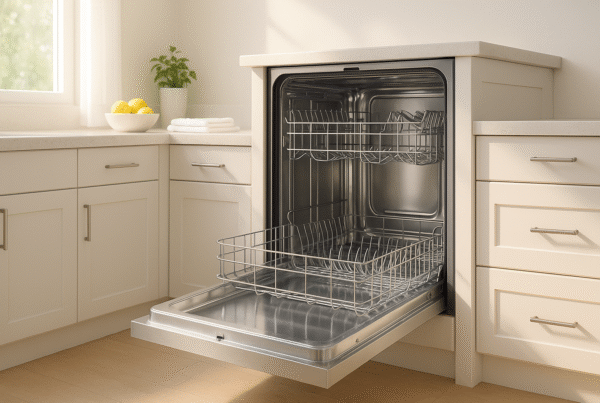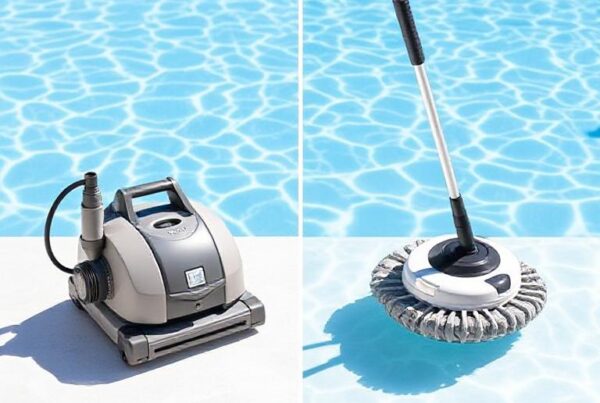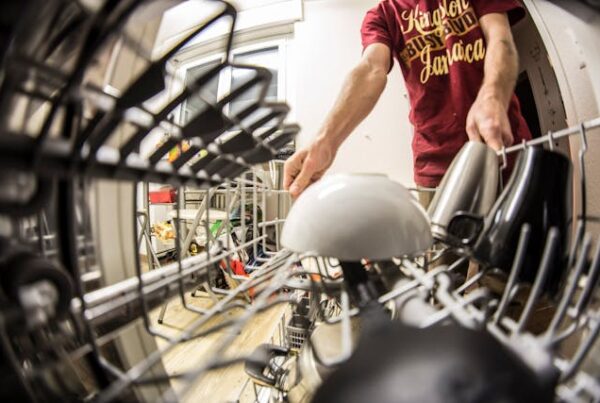Best Way to Clean Microwave Oven-Spotless Microwave
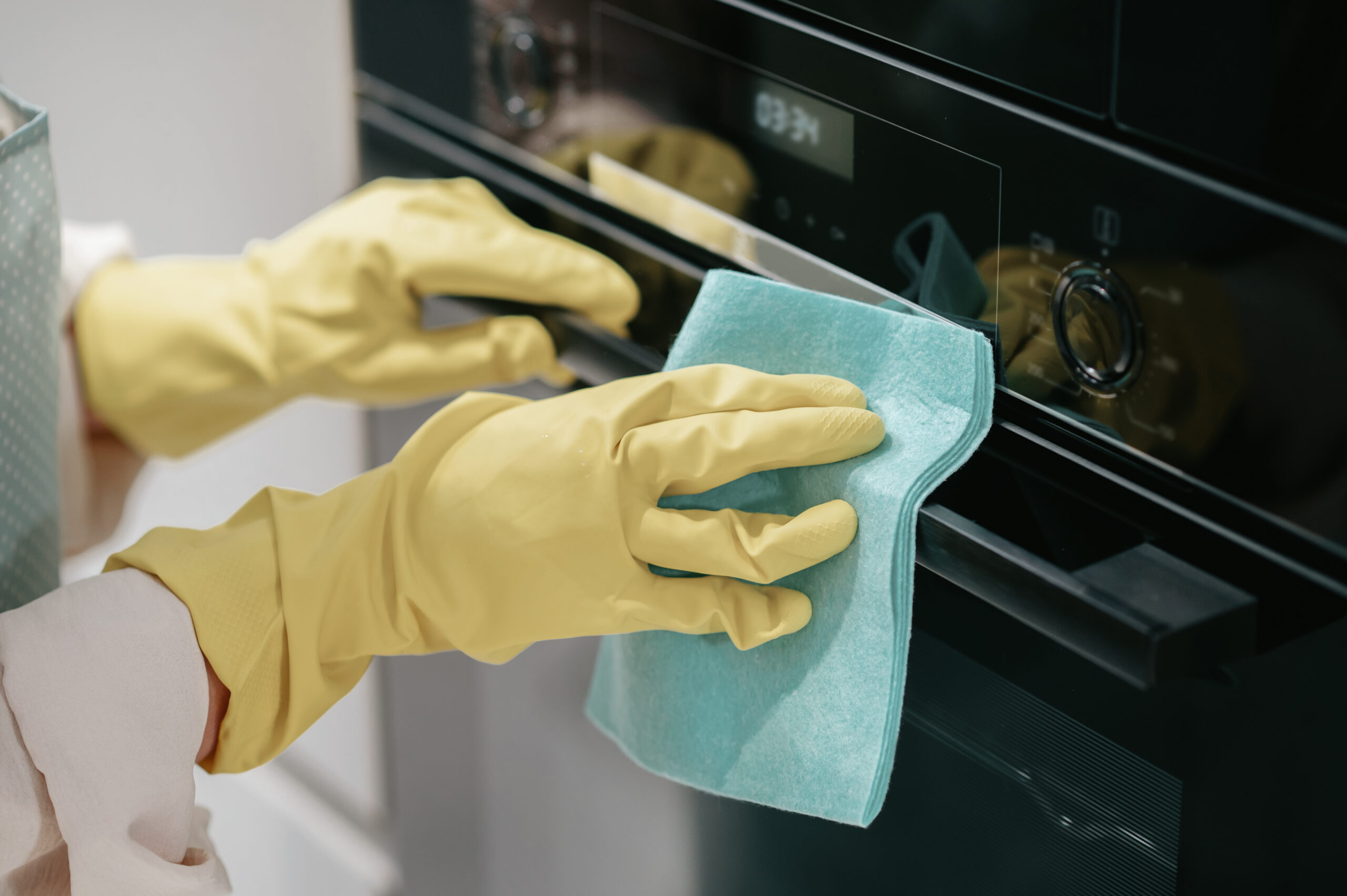
A clean microwave is not only essential for maintaining a hygienic kitchen, but it also ensures that your food is safe and free from harmful bacteria. However, cleaning a microwave can be a daunting task, especially when tough stains and odors are involved.
In this article, we’ll share with you the best way to clean a microwave, step-by-step, so you can say hello to a spotless and fresh-smelling appliance. Whether you prefer natural or commercial cleaning solutions, we’ve got you covered with tips and tricks to make your microwave cleaning process effortless and effective. Get ready to learn how to maintain a clean and hygienic microwave that will not only look great, but also function at its best.
Read More: Best Built-in Microwave Convection Oven- Best One to Buy
Why Regularly Cleaning Your Microwave is Important?
Regularly cleaning your microwave is important for several reasons. Here are some reasons why you should make it a habit to clean your microwave on a regular basis:
- A microwave can harbor bacteria and germs from food spills and splatters. Regular cleaning helps to prevent the growth of harmful bacteria, which can cause foodborne illnesses.
- Also, a dirty microwave can affect its performance and efficiency. Food debris and grease can accumulate on the interior and exterior surfaces, causing the microwave to work harder and use more energy to heat food.
- Clean microwave lasts longer than a dirty one. The accumulation of food debris and grease can cause damage to the interior and exterior surfaces of the microwave, leading to premature wear and tear.
Preparing Your Microwave for Cleaning
Before you start cleaning, unplug the microwave and let it cool if it was just used. Remove the turntable plate and any accessories like grill racks. Dispose of any used microwave oven liners or covers. Have ready a bowl of warm water, a sponge, microfiber cloth, and microwave-safe cleaning products.
Cleaning the Interior of Your Microwave
Fill a microwave-safe bowl with water and either dish soap, vinegar, or a commercial microwave cleaner. Place the bowl in the center of the microwave and heat on high for 2 to 3 minutes.
Keep the door closed for a few more minutes after it beeps to allow the steam to continue loosening stuck-on food particles.Carefully remove the hot bowl and empty the water. Wipe down the interior with a sponge or damp microfiber cloth to remove any remaining debris.
For tough stains, use a non-toxic scrubbing sponge or scrubber. Rinse the sponge and wring out excess water to avoid getting too much moisture in vents or crevices. Leave the door open to air out and prevent a musty smell. This also allows moisture to evaporate so you can start using the microwave again promptly.
Cleaning the Exterior of Your Microwave
Use a multi-surface cleaner or disinfectant and microfiber cloth to wipe down the exterior, including the microwave door handle and control panel. For stuck-on debris around the edges or in narrow cracks use a cotton swab soaked in cleaner. Rinse the microfiber cloth and wipe the entire outside of the microwave to remove any remaining residue and leave your microwave sparkling clean.
How To Clean Your Oven With Baking Soda?
Why Baking Soda?

Baking soda, also known as bicarbonate of soda, is not only a common ingredient in baking recipes but also a versatile cleaning agent. It is renowned for its mild abrasive properties, making it an excellent choice for removing stubborn stains and baked-on grime from your oven. Moreover, baking soda is a natural deodorizer, and it can help eliminate unpleasant odors that may arise from food spills and splatters. Using baking soda to clean your oven is a cost-effective, eco-friendly, and non-toxic solution.
Method of Cleaning Oven with Baking Soda
➪ Step 1: To start the cleaning process, remove the oven racks and set them aside to clean separately. Create a paste by combining baking soda with water, ensuring it has a spreadable consistency. Avoid making the mixture too runny, as it may not adhere and effectively clean the oven surfaces.
➪ Step 2: Next, using a spatula or gloved fingers, apply the baking soda paste all over the interior of the oven, paying extra attention to heavily soiled areas. Let the paste sit for several hours or overnight to allow the baking soda to work its magic.
➪Step 3: After the suggested time has passed, use a damp cloth or sponge to wipe away the baking soda paste. For tough stains, a soft-bristle brush can be used to scrub gently. Rinse the cloth or sponge frequently to remove any residue.
➪Step 4: Once all the baking soda residue has been wiped away, thoroughly rinse the cloth or sponge again and give the oven a final wipe-down to remove any remaining baking soda particles. Finally, replace the oven racks, ensuring they are clean and dry before sliding them back into the oven.
Cleaning Oven With Baking Soda and Vinegar
Instead of reaching for harsh chemicals and scrub brushes, consider using two common household items – baking soda and vinegar. This natural cleaning solution is not only effective but also safer for you and the environment. In this blog post, we will guide you through the process of cleaning your oven with baking soda and vinegar, leaving it sparkling and fresh.
✅ 1. Preparation: Before you begin, you should remove any loose debris from your oven, such as food crumbs or burnt residue. You can use a vacuum cleaner or a small brush for this purpose. Once the oven is free from loose debris, you can move on to using baking soda and vinegar to tackle the tough stains.
✅ 2. Baking Soda Paste: In a small bowl, mix around 1/2 cup of baking soda with a few tablespoons of water to create a thick paste. Baking soda is a natural abrasive that helps to break down grease and grime. Spread this paste on the interior surfaces of your oven, ensuring to cover all the dirty areas. Pay extra attention to the stubborn stains or areas with built-up grease. Let the baking soda paste sit overnight, allowing it to work its magic.
✅ 3. Vinegar Solution: The next day, it’s time to use vinegar to complete the cleaning process. Fill a spray bottle with equal parts vinegar and water. Spray the solution over the baking soda paste that you applied earlier. The combination of vinegar and baking soda will create a foaming action that helps to remove the grime and grease. The vinegar also helps to neutralize any remaining odors in your oven.
✅ 4. Scrubbing: After the foaming action has subsided, use a damp sponge or cloth to scrub the surfaces of your oven. You will notice that the baking soda paste has loosened the grime, making it easier to remove. Wipe away the residue with a clean cloth or sponge, rinsing it frequently. Take the time to reach all the nooks and crannies of your oven to ensure a thorough cleaning.
✅ 5. Final Steps: Once you have scrubbed away all the grime, rinse the surfaces of your oven with a clean damp cloth to remove any remaining baking soda or vinegar residue. Ensure that all cleaning product residues are removed to prevent any unpleasant smells during the next use of your oven. Allow your oven to dry thoroughly before using it again.
Clean Microwave with Lemon | Clean Oven Without Chemicals
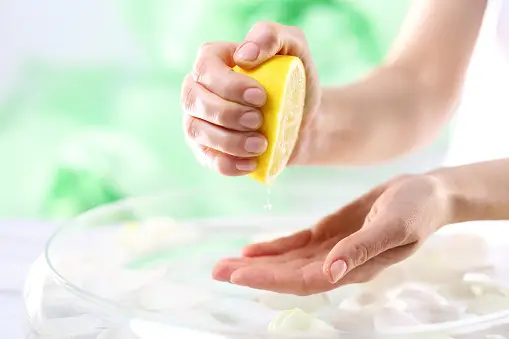
Lemons contain citric acid, a natural cleaner that is effective in breaking down grease, grime, and food residue. Using lemons to clean your microwave not only helps to remove the dirt but also leaves behind a fresh and citrusy scent. This natural cleaning solution is ideal for those who prefer to avoid using harsh chemicals in their home. Additionally, lemons are readily available and affordable, making them a practical choice for everyday cleaning tasks.
➪ Method of Cleaning Microwave with Lemon
To begin the process of cleaning your microwave with lemons, squeeze the juice of one lemon into a microwave-safe bowl. Add one cup of water to the bowl and place it in the microwave. Heat the mixture on high for three minutes or until it comes to a boil. Let the mixture sit in the microwave for an additional five minutes to allow the steam to work its magic on the dirt and grime.
► Wiping Away the Dirt
After the five-minute mark, carefully remove the bowl from the microwave. Be cautious as the mixture will be hot. With a damp cloth or sponge, wipe away any dirt or residue that may have loosened due to the steam. The citric acid in the lemon juice helps to break down the grime, making it easier to clean. For stubborn stains or spots, dip the cloth or sponge in the lemon-water mixture and scrub gently until the residue is removed.
► Finishing Touches
Once you have thoroughly cleaned the interior of your microwave, it is essential to give it a final wipe-down to ensure all remnants of the cleaning solution are gone. Use a clean damp cloth or sponge to wipe the surfaces once more. Additionally, you can cut a lemon in half and rub it along the walls and ceiling of the microwave to leave a fresh citrus scent behind. Finally, make sure to remove any remaining moisture in the microwave to prevent the growth of mold or bacteria.
Cleaning Oven Glass Window| Best Method
Keeping your oven glass window clean is not only important for maintaining a professional and polished appearance in your kitchen, but it also ensures that you can see the progress of your cooking without having to constantly open the oven door. Let’s learn effective techniques and methods for cleaning the oven glass window, using everyday household items like dishwasher tablets, or aluminum foil. Read on to learn more!
Clean Oven Door with Aluminum Foil
One effective technique for cleaning oven glass windows is using aluminum foil. Start by crumpling a sheet of aluminum foil into a small ball. Then, dip the ball into the warm soapy water and gently rub it over the glass in circular motions. The rough texture of the foil will help to remove built-up grime and grease. Rinse the glass thoroughly with clean water and use a microfiber cloth to dry it completely. This method is not only effective but also safe for the glass surface, making it an ideal choice for regular maintenance.
Cleaning Oven Door Glass with Dishwasher Tablet
Another method to clean your oven door glass is by using a dishwasher tablet. Begin by filling a bowl with warm water and placing a dishwasher tablet in it. Let the tablet dissolve completely. Then, dip a sponge or cloth into the mixture and gently scrub the glass in small circular motions. The active cleaning agents in the tablet will help to break down any stubborn stains or grease. Rinse the glass with clean water and use a lint-free cloth to dry it. This method is particularly useful for deep cleaning, as dishwasher tablets are designed to remove tough stains.
Regular Maintenance to Prevent Build-Up
To prevent build-up on your oven door glass, it is advisable to perform regular maintenance. After each use, ensure that the oven has cooled down before lightly wiping the glass with a damp cloth or sponge. This will help to remove any immediate stains or residue. Additionally, it is important to clean the glass regularly to avoid the build-up of grease and grime. Follow the above-mentioned methods to keep your oven door glass in optimal condition.
Avoid Harsh Chemicals or Abrasives
When cleaning your oven door glass, it is crucial to avoid using harsh chemicals or abrasives, as they can damage the glass surface. It is recommended to opt for gentle, non-abrasive cleaning solutions. Along with the aforementioned methods, you can also use a mixture of baking soda and water to create a paste. Apply the paste to the glass, let it sit for a few minutes, and then wipe it off with a damp cloth. This natural solution is effective in removing mild stains and is safe for regular use.
Tips for Removing Stubborn Stains and Odors
Tip 1: For tough stains in the microwave interior like burnt on food, fill a bowl with equal parts water and vinegar or a commercial limescale remover per the product directions.
Tip 2: Heat for 2-3 minutes, then scrub with an abrasive sponge.
Tip 3: For odors, after cleaning put some vinegar, baking soda, lemon juice or coffee grounds in a bowl and heat for 2 minutes. Leave in the microwave overnight before wiping clean.
Maintaining a Clean and Fresh Microwave
Use a microwave oven liner or splatter guard to minimize splatters and stains over time. Wipe up any spills immediately to prevent staining and odors. For regular maintenance, do a quick wipe down of the interior and exterior once a week or every other week based on usage and splattering. Perform the deep cleaning method every 1-3 months based on how often you use your microwave.
Natural and DIY Cleaning Solutions for Your Microwave
1. Microwave Steam Cleaning:
Add 1-2 cups water and the juice from half a lemon to a microwave-safe bowl. Heat for 3 minutes, let stand to steam, then wipe clean.
2. Baking Soda Paste:
Make a paste from baking soda and water and scrub stuck-on debris with the paste using a sponge or non-abrasive scrubber.
3. Vinegar:
Heat a mixture of equal parts water and vinegar for 2-3 minutes. Wipe down the interior and leave the door open to eliminate odors.
How Often Should You Clean Your Microwave?
- For regular usage (3-4 times a week), perform a quick wipe down weekly and a deep clean once a month.
- For heavy usage (5-6 times a week), do a quick clean twice a week and a full clean every other week.
- For occasional usage, deep clean once a month or every other month and do a spot check and wipe in between to avoid stuck on splatters.
Avoiding Common Mistakes When Cleaning Your Microwave
➜Do not use harsh chemicals, abrasive cleaners or strong detergents which can damage the interior.
➜Do not submerge or spray down the microwave with water or cleaner. Only wipe with damp sponges or cloths.
➜Do not turn on your microwave when wet to avoid steam damage or arcing. Wait until fully dry after cleaning before using.
➜Do not forget to reinstall the turntable plate and other accessories like racks before using your microwave.
➜Do not skip cleaning vents, door seals and narrow crevices where grease and grime can build up.
➜Do not lock microwave doors open, always supervise if open to prevent children/pets from accessing.
FAQs
Q: What is the best way to clean the inside of a microwave?
A: The best way to clean the inside of a microwave is to start by removing any loose debris. Then, mix a solution of equal parts water and vinegar or water and lemon juice in a microwave-safe bowl. Place the bowl in the microwave and heat it on high for a few minutes until the mixture boils and creates steam. Let it sit for a few more minutes to allow the steam to loosen any grime. Finally, carefully remove the bowl and wipe down the interior with a damp cloth or sponge.
Q: What is the easiest way to clean a very dirty microwave?
A: The easiest way to clean a very dirty microwave is to fill a microwave-safe bowl with water and add a few tablespoons of vinegar or lemon juice. Place the bowl in the microwave and heat it on high for a few minutes until the mixture boils and creates steam. Let it sit for a few more minutes to allow the steam to loosen the dirt and grime. Then, carefully remove the bowl and wipe down the interior with a damp cloth or sponge.
Q: Is it better to clean a microwave with lemon or vinegar?
A: Both lemon and vinegar are effective for cleaning a microwave. Lemon has a pleasant scent and can help eliminate odors, while vinegar is known for its disinfecting properties. You can choose either option based on personal preference. Mixing either lemon juice or vinegar with water and heating it in the microwave will create steam that helps loosen dirt and grime, making it easier to clean.
Q: How do you clean a microwave naturally?
A: To clean a microwave naturally, you can use a mixture of water and either vinegar or lemon juice. Fill a microwave-safe bowl with equal parts water and vinegar or water and lemon juice. Heat the mixture in the microwave until it boils and creates steam. Let it sit for a few minutes to allow the steam to loosen any dirt or grime. Then, carefully remove the bowl and wipe down the interior with a damp cloth or sponge.
Q: What should I avoid when cleaning a microwave?
A: When cleaning a microwave, there are a few things you should avoid. Firstly, avoid using harsh chemicals or abrasive cleaners, as they can damage the microwave’s interior. Additionally, avoid using excessive force when scrubbing, as it can scratch the surface. Lastly, be cautious when handling hot bowls or liquids from the microwave to prevent burns.
Q: Can you put vinegar in the microwave?
A: Yes, you can put vinegar in the microwave. Vinegar is often used as a natural cleaning agent for microwaves. By mixing vinegar with water and heating it in the microwave, you can create steam that helps loosen dirt and grime, making it easier to clean.
Q: How much baking soda do I use to clean my microwave?
A: To clean your microwave with baking soda, you can create a paste by mixing baking soda with a small amount of water. Start with a tablespoon of baking soda and gradually add water until you achieve a paste-like consistency. Apply the paste to the interior of the microwave, focusing on any stubborn stains or spots. Let it sit for a few minutes, then wipe it off with a damp cloth or sponge.
Q: How do I deep clean my oven?
A: Deep cleaning an oven typically involves removing the oven racks and using an oven cleaner or a mixture of baking soda and water to clean the interior. Follow the instructions on the oven cleaner or create a paste with baking soda and water, then apply it to the interior surfaces. Let it sit for a few hours or overnight to allow the cleaner to work. Afterward, scrub the interior with a sponge or brush, and wipe away any residue. Don’t forget to clean the oven racks separately.
Q: How do you clean a microwave with a lemon?
A: To clean a microwave with a lemon, you can cut a lemon in half and squeeze the juice into a microwave-safe bowl. Fill the bowl with water and place the lemon halves in it. Heat the mixture in the microwave until it boils and creates steam. Let it sit for a few minutes to allow the steam to loosen any dirt or grime. Then, carefully remove the bowl and wipe down the interior with a damp cloth or sponge.
Q: Can baking soda clean a microwave?
A: Yes, baking soda can be used to clean a microwave. You can create a paste by mixing baking soda with a small amount of water. Apply the paste to the interior of the microwave, focusing on any stubborn stains or spots. Let it sit for a few minutes, then wipe it off with a damp cloth or sponge. Baking soda is known for its mild abrasive properties, which can help remove grime and odors.
Q: How long should I put lemon and water in the microwave to clean it?
A: To clean a microwave with lemon and water, you can fill a microwave-safe bowl with water, squeeze the juice of a lemon into it, and place the lemon halves in the bowl. Heat the mixture in the microwave for about 3-5 minutes, or until it boils and creates steam. Let it sit for a few more minutes to allow the steam to loosen any dirt or grime. The exact time may vary depending on the wattage of your microwave.
Q: How long should I put white vinegar in the microwave to clean it?
A: To clean a microwave with white vinegar, you can fill a microwave-safe bowl with equal parts water and vinegar. Heat the mixture in the microwave for about 3-5 minutes, or until it boils and creates steam. Let it sit for a few more minutes to allow the steam to loosen any dirt or grime. The exact time may vary depending on the wattage of your microwave.
Conclusion
Cleaning your microwave is easy and doesn’t require any special tools or equipment. With a few simple steps and natural cleaning solutions, you can have a spotless and fresh-smelling microwave in no time. So, don’t wait any longer. Follow these tips and say hello to a spotless microwave.










